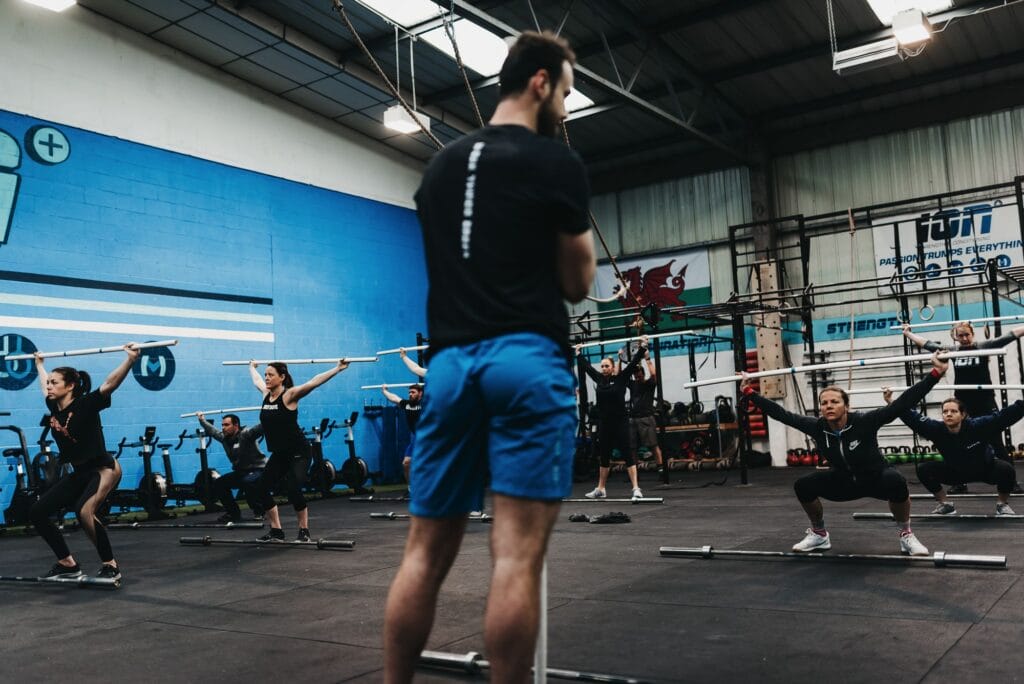Everyone knows that exercise leads to a healthy body, strong muscles, reduced stress, and weight loss. But what many people don’t consider is what happens on an internal level after exercise is complete. The number of techniques or strategies which could be implemented into your workout for greater achievement is endless. At ION Strength and Conditioning the majority of classes we run at are performed at High Intensity, a popular method of training and powerful internal effects post workout. High Intensity varies from person to person depending on their current fitness ability. For some, high intensity might be lifting a light weight, a slow jog, a step up, whilst for others it maybe lifting a heavy weight, an all out sprint or a box jump! All our classes are scaled to suit the individuals level of fitness ability and is geared towards helping them improve in all aspects of health and fitness, whether a complete novice or a more advanced trainer – we have all shapes and sizes in our classes! We just want people to come in, listen to our experienced coaches, have fun and get a great workout in!
So why do we focus on High Intensity training?
Every activity from sleeping and breathing to running, jumping and lifting requires energy, studies have shown that intense exercise is highly effective for burning calories. This may sound obvious, but the harder you work, the more calories you burn even after you’ve completed your workout!
So many times we’ve heard members saying that they were disappointed they didn’t burn more calories in the session as they reflect by looking at their WODify Pulse Heart Rate monitor, Fitbit or some other training feedback device and it shows they’ve burnt only a couple of hundred calories. But the magic happens post workout thanks to EPOC (Excessive Post Exercise Oxygen Consumption) AKA The Afterburn Effect AKA Oxygen Debt – THE ION EFFECT!!

Exercise is often categorised as either aerobic (with oxygen) or anaerobic (without oxygen). Aerobic activities include jogging, swimming and walking and are performed at a slow to moderate pace during which fat is the primary source of fuel. Anaerobic exercise is much faster paced and carbohydrates in the form of glucose and glycogen are the main source of fuel.
When put in this way – people often think that this suggests aerobic training is the best way to achieve fat loss and that isn’t necessarily true.
Its correct to think that fat is your primary source of energy during aerobic activities, however due to its make up, very little fat is actually used up during aerobic activity and while your metabolic rate increases while you are exercising, it soon returns to normal once your workout is completed. Where as with anaerobic activities such as high intensity training or weight training you will burn more carbs than you do fat, it also causes a big spike in your metabolism that stays elevated long after the workout is over, this is due to EPOC or the Afterburn Effect!
Classes that we run at ION, such as CrossFit, Assault Concept and Triangle Conditioning are known as metabolic workouts that create a lot of oxygen debt which simply means you are taken out of your aerobic (blue/green zone) training zone and into your anaerobic (yellow/red zone) training zone. This results in a massive increase in hydrogen ion levels in the muscles that makes your muscles burn – and the higher the build up of hydrogen ions, the greater the EPOC effect will be and the longer it will last – the reason being your body is is forced to use up a lot of energy as it tries to bring the body back to homeostasis, its resting normal state by lowering your bodies temperature thats increased through training but also replenishing it’s energy stores, especially immediate sources of energy by breaking down the built up hydrogen ions and the lactate formed in the muscles by reconverting to glucose, and muscle glycogen levels are being restored during this process.
As you use energy up, you burn calories – simple as that!
Studies have shown that EPOC effect can last around 24-hours after exercise which means that, as well as burning calories while you exercise, your metabolism will remain high until well into the following day. Remember; the higher your metabolism, the more calories you burn and, assuming you do not eat more than normal, the greater your calorie deficit will be. The greater the calorie deficit, the faster you’ll lose fat!
So when you return home from a tough session at the gym and you are sat on the sofa watching Corrie, feel satisfied that even though your workout is complete your bodies is still blasting those calories!
It’s also important to note, that high intensity training is only one method of training and its important to train at a variety of different intensities in order to maximise results!
If you are interested in knowing more about our classes, please have a look at our website further or contact us at info@ioncardiff.com
Robin Sowden-Taylor



